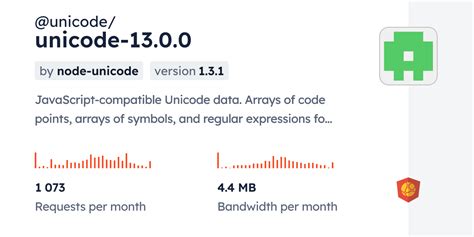In today’s rapidly evolving digital landscape, identifying vulnerabilities in programming tools has become essential for developers and users alike. As more software relies on these tools to function, any security flaw can lead to significant risks, from data breaches to malicious code injection. Understanding these vulnerabilities is critical to maintaining the security and integrity of both applications and systems. This article explores the most commonly used programming tools, highlights the top vulnerabilities affecting them, and provides insights into how these security issues can impact developers and users. By staying informed and adopting best practices, you can safeguard your programming environment and ensure the safe use of software in your projects.
Let’s investigate this topic extensively with zokablog.com
1. Introduction to the importance of identifying vulnerabilities in programming tools
As software development becomes increasingly complex and interconnected, identifying vulnerabilities in programming tools is more important than ever. Programming tools, from integrated development environments (IDEs) to libraries and frameworks, are the backbone of modern software creation. However, these tools can also contain security flaws that expose developers, users, and entire systems to cyberattacks.
Undetected vulnerabilities in widely used programming tools can serve as entry points for hackers, leading to severe consequences such as data loss, unauthorized access, and compromised software integrity. Ignoring these weaknesses can significantly impact the security of applications, especially in industries where sensitive data is handled.
Understanding the importance of identifying these vulnerabilities allows developers to stay ahead of potential threats. It ensures that code is built on a secure foundation, minimizing the risks of exploitation. In this article, we will delve into the common vulnerabilities present in popular programming tools and the measures that can be taken to mitigate them, safeguarding development processes and end-users alike.

2. Overview of the most commonly used programming tools
Programming tools are essential for developing, testing, and maintaining software. These tools range from integrated development environments (IDEs) to compilers, debuggers, and version control systems. Among the most commonly used programming tools are Visual Studio Code, IntelliJ IDEA, and Eclipse, which provide a comprehensive environment for writing and testing code. IDEs streamline the development process by integrating multiple features like syntax highlighting, code completion, and debugging capabilities into a single platform.
Other popular tools include Git for version control, which helps track changes in code, collaborate with teams, and manage software development workflows. Additionally, package managers like npm and pip simplify the installation and management of libraries and dependencies for various programming languages.
Frameworks such as Node.js, Django, and React are widely used to build web applications, while testing tools like JUnit and Selenium ensure that code functions as expected. Each of these tools is indispensable in modern software development but also carries potential vulnerabilities. Knowing which tools are most commonly used allows developers to focus their efforts on securing these critical components of their development stack, minimizing risks that could compromise security or lead to exploitation.

3. Explanation of what software vulnerabilities are
Software vulnerabilities are weaknesses or flaws within a software system that can be exploited by attackers to gain unauthorized access, cause system failures, or manipulate data. These vulnerabilities can exist in various forms, such as coding errors, misconfigurations, or insecure design practices. They often stem from unintentional mistakes during the development process, such as failing to properly validate input, leaving default credentials in place, or neglecting to patch known security issues.
Vulnerabilities are typically categorized into different types, such as buffer overflows, where excessive data input can crash a system or allow malicious code execution, and SQL injection, which allows attackers to manipulate database queries. Other vulnerabilities include cross-site scripting (XSS), which exploits web applications to inject malicious scripts, and privilege escalation, where attackers elevate their access rights beyond what they are intended to have.
These weaknesses pose significant risks to both developers and users, as they can lead to data breaches, system corruption, or unauthorized access to sensitive information. Understanding software vulnerabilities is critical because it helps developers recognize the potential entry points for attackers. This knowledge empowers them to implement security measures early in the development process, minimizing the risk of exploitation and safeguarding the software, its users, and their data from harmful attacks.

4. Detailed look at the top vulnerabilities found in these tools
Several common vulnerabilities are frequently found in popular programming tools, each posing significant risks. One of the most prevalent is buffer overflow, where tools improperly handle memory allocation, allowing attackers to inject malicious code or crash the system. Another is improper input validation, a flaw that occurs when tools fail to sanitize user inputs, leading to attacks like SQL injection or cross-site scripting (XSS), both of which can result in unauthorized access or data manipulation.
Insecure dependency management is another major vulnerability, particularly when developers rely on third-party libraries without verifying their security. Outdated or compromised libraries can introduce weaknesses into otherwise secure applications. Additionally, weak authentication mechanisms in programming tools can allow attackers to bypass security controls and gain unauthorized access to systems.
Finally, privilege escalation vulnerabilities occur when programming tools allow users to gain higher-level access than intended, leading to the manipulation or theft of sensitive data. Addressing these vulnerabilities is crucial to maintaining a secure development environment and minimizing the risks posed by potential exploits.
5. Specific examples of recent vulnerabilities in popular programming tools
Recent years have seen several high-profile vulnerabilities in popular programming tools, highlighting the ongoing risks for developers. One notable example is the vulnerability discovered in Visual Studio Code, where certain extensions allowed attackers to execute arbitrary code remotely, compromising both the tool and the system it was running on. This issue, found in some popular extensions, underscored the importance of scrutinizing third-party add-ons for potential security gaps.
In another instance, a critical vulnerability was found in Git, the widely-used version control tool. The flaw allowed attackers to craft malicious repositories that could execute code on the user’s machine when cloned. This vulnerability was swiftly patched, but it revealed how essential it is to keep tools updated and secure.
Additionally, npm, a package manager for JavaScript, experienced a significant issue when certain packages were compromised, allowing attackers to install malware through legitimate libraries. Developers using these packages unknowingly exposed their projects to severe security risks.
Finally, vulnerabilities in frameworks like Django have also surfaced, such as a bug allowing users to bypass authentication mechanisms. These recent examples illustrate the importance of staying vigilant about vulnerabilities and ensuring that programming tools and dependencies are consistently patched and reviewed for security flaws.
6. Potential risks and impacts of these vulnerabilities on developers and users
The vulnerabilities in programming tools pose significant risks to both developers and users, often leading to severe consequences. For developers, exploiting these weaknesses can result in compromised source code, leading to the loss of intellectual property or the insertion of malicious code into their projects. This could damage a developer’s reputation, disrupt ongoing projects, or even halt development entirely due to security breaches.
For users, the risks are equally concerning. Vulnerabilities in software can enable unauthorized access to personal or sensitive data, leading to privacy violations, identity theft, or financial losses. In critical systems, such as those used in healthcare, finance, or government, these security gaps can cause widespread damage, potentially affecting millions of people.
Moreover, unpatched vulnerabilities can lead to system crashes, data corruption, and other forms of software malfunction, reducing trust in the affected tools and applications. Understanding and addressing these risks is crucial to maintaining secure development environments and protecting both developers and end-users from the far-reaching impacts of security breaches.
7. Methods to detect and address vulnerabilities in programming tools
Detecting and addressing vulnerabilities in programming tools involves a combination of proactive and reactive measures. One effective method is conducting regular security audits and code reviews, which help identify potential vulnerabilities early in the development process. Automated tools, such as static and dynamic analysis scanners, can analyze code for common security issues and provide insights into potential weaknesses.
Another key practice is staying informed about updates and patches for programming tools and libraries. Developers should regularly apply security patches and updates to address known vulnerabilities and minimize risks. Additionally, using tools that offer dependency scanning can help detect vulnerabilities in third-party libraries before they become a problem.
Implementing secure coding practices is also essential. This includes validating and sanitizing user inputs, avoiding the use of deprecated functions, and following best practices for authentication and authorization.
Finally, fostering a culture of security awareness among developers through training and ongoing education ensures that security considerations are integrated into all stages of software development, from design to deployment.
8. Best practices for securing your programming environment
Securing your programming environment is crucial to maintaining the integrity and safety of your software projects. One of the best practices is to regularly update and patch your development tools and libraries to address known vulnerabilities. Ensure that you apply updates promptly to mitigate risks from newly discovered security issues.
Implementing strong access controls is also vital. Use least privilege principles to limit user permissions and ensure that only authorized personnel have access to sensitive parts of your development environment. Additionally, enforce multi-factor authentication (MFA) to add an extra layer of security for accessing development tools and repositories.
Regularly conduct security training for your development team to raise awareness about potential threats and best practices for secure coding. Encourage the use of static and dynamic analysis tools to identify and fix security flaws in your code early in the development process.
Employ secure coding practices such as input validation, proper error handling, and encryption of sensitive data. Finally, maintain comprehensive backup and disaster recovery plans to safeguard against data loss and ensure business continuity in the event of a security incident.
9. Recommendations for choosing safer programming tools
When selecting programming tools, prioritize those with a strong track record for security and regular updates. Choose tools from reputable vendors that provide timely patches and have active security teams. Look for tools with built-in security features, such as robust access controls, encryption options, and comprehensive logging.
Evaluate the community and support surrounding the tool. Tools with active communities often receive quicker updates and security fixes due to broader scrutiny and collaboration. Additionally, consider tools that offer clear security documentation and best practices.
Check for compatibility with vulnerability management tools, such as those for static and dynamic code analysis, to ensure you can effectively monitor and address potential issues. Lastly, assess the tool’s history for any past security breaches or vulnerabilities and how promptly they were addressed. Opting for tools with a proven commitment to security can significantly reduce the risk of vulnerabilities impacting your development projects.
10. Conclusion emphasizing the importance of staying updated on vulnerability reports and patches
Staying updated on vulnerability reports and patches is crucial for maintaining a secure programming environment. As software tools evolve, new vulnerabilities can emerge, making it essential for developers to remain vigilant. Regularly reviewing security advisories and applying patches ensures that known weaknesses are addressed before they can be exploited by attackers.
The dynamic nature of cybersecurity means that threats are constantly evolving, and the tools you use must adapt to these changes. Ignoring updates or delays in applying patches can leave your development environment exposed to risks that could compromise your code, data, and user safety. By proactively managing updates and patches, you safeguard your projects from potential exploits and maintain trust with users and stakeholders.
In conclusion, a proactive approach to monitoring and addressing vulnerabilities is vital for protecting your software and its users. Staying informed about security developments and promptly implementing fixes is a key component of a robust security strategy, helping to ensure the integrity and safety of your programming tools and applications.
zokablog.com